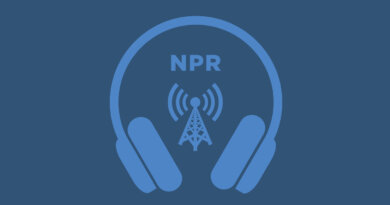Managing Treatment-Resistant Depression: One Person’s Story
When Imadé Borha graduated from Columbia University in 2015 with a master’s degree in nonfiction creative writing, she thought the last thing she’d have to worry about was finding a job. It didn’t happen. “That was around the time of the first suicide attempt,” recalls Borha, 34, now a Durham, NC-based communications professional for a nonprofit organization.
“Career instability was triggering a lot of the mental health problems I was having,” she says. “It had felt like a failure that I had to leave New York, and not having a job” was traumatic.
Borha was first diagnosed with major depressive disorder in 2012. “It was in response to suicidal behavior, and basically textbook depression,” she says. “When I had the first suicide attempt, that was when I noticed that the three meds I’d taken hadn’t helped.”
Treatment-resistant depression happens when someone with major depressive disorder hasn’t responded to at least two antidepressants taken in the right dosage for the prescribed amount of time, according to Matthew Rudorfer, MD, a psychiatrist and chief of the somatic treatments and psychopharmacology program at the National Institute of Mental Health in Maryland.
“There are clearly many shades of major depression. … There is no ‘one-size-fits-all’ solution. Rather, the best clinical intervention for the person with [treatment-resistant depression] should be personalized to the individual. A major aim of ongoing research is to improve the ability to match patients with the right treatment.”
A New Diagnosis
In 2019, Borha was diagnosed with borderline personality disorder (BPD), which brings mood swings, a shaky sense of self, impulsive behavior, and trouble forming relationships.
“The symptoms of BPD include extreme, intense emotions that can be triggered by reactions like a sense of abandonment or rejection,” she says. She feels being turned down for jobs and other opportunities brought her symptoms roaring to the surface.
Amid the mental turmoil, it took a while for Borha to tease out how much anxiety drove much of her thinking and actions. “When you’re highly suicidal, you really don’t have the time to ask, ‘Do I have an anxiety problem?’ ” In time, she tried the prescription anti-anxiety med buspirone (BuSpar). It helped quiet her mind. Along with dialectical behavioral therapy, her world began to come into focus.
Dialectical behavioral therapy blends weekly talk therapy with group skills training. It zeroes in on emotions and takes a balanced approach to both accept oneself and learn ways to make helpful changes. It was first developed to treat BPD and women with suicidal tendencies, but now it’s used to treat other related problems, too.
“It helps folks like me, who have really big emotions, have skills or tools to help regulate those emotions so our lives aren’t looking like chaos every single day,” Borha says. Exercise — mainly high-intensity interval training — helps keep her centered too, she says.
Community Is Key
“I do strongly believe that building [a mental health] community is going to keep me alive, keep my suicidal behavior and self-harm low,” Borha says. At the same time, she finds it tough to build interpersonal relationships because of her fear of abandonment and rejection. “I speak a lot, but when it comes to day-to-day interaction about my current mental health, it’s hard. I need to be more vulnerable, to put myself out there, to just be honest with people.”
Borha says resistance to seeking treatment for mental or emotional conditions is deep-rooted in the Black community. “We’re dealing with a situation where historically, when Black people disclose they’re sad, they’re depressed, or they’re angry, they’ll be punished. They feel their lives can be in danger. That response echoes through their families and support systems.”
Borha says the mindset to keep problems in the family, under wraps, is loosening up a little. “Now, [Black people with mental issues] have a chance to find therapists and other resources.” However, she still sees obstacles and racial bias related to care.
Through her website, DepressedWhileBlack.com, Borha tries to link her followers with therapists who’ll understand them. Right now, her Help Me Find a Therapist program is on hiatus while her team catches up on the backlog of requests.
Be Your Own Researcher
“I do think treatment-resistant depression is a huge part of the suicide crisis,” Borha says. “If we can treat people who’ve struggled with it, we can save lives.”
The antidepressant esketamine (Spravato) is the only drug the FDA has approved specifically for treatment-resistant depression, though a range of other treatments and therapies can help and continue to be studied, Rudorfer says. Esketamine comes from ketamine. It’s a nasal spray that has to be given and monitored by a health care provider.
Borha says she’s asked her insurance to cover esketamine, but so far it’s a no-go. Meanwhile, she presses on to study and learn more about her condition.
“I would say research your symptoms, because you may [need] a different diagnosis,” she says. “Then use that research to do self-advocacy. Tell your therapist or psychiatrist what else is out there that they haven’t considered, when it comes to diagnoses.”
And, she says, “It’s OK to be wrong. … If psychiatrists can be wrong, I can be wrong. As patients, we have the right to experiment, and to fail, and to try again. We have that right.”
“Just experiment, research, and go for it,” she says. “Advocate for yourself.”



